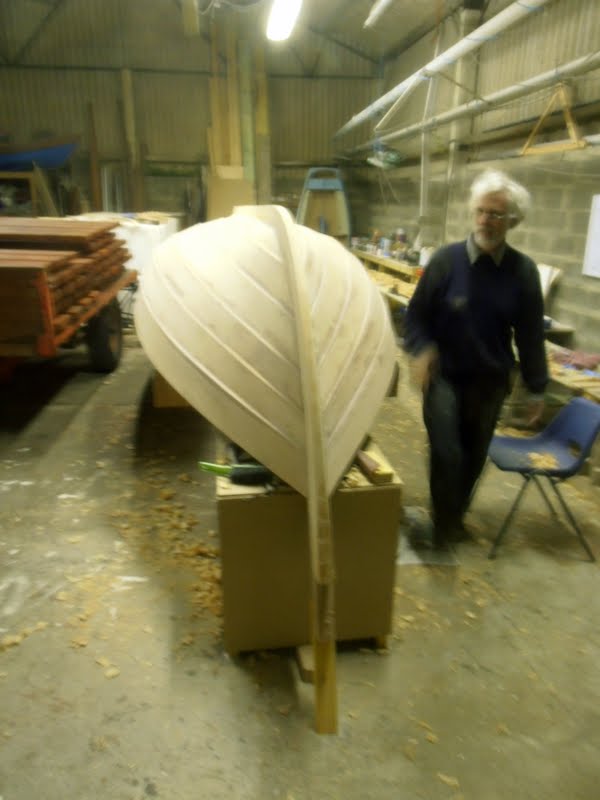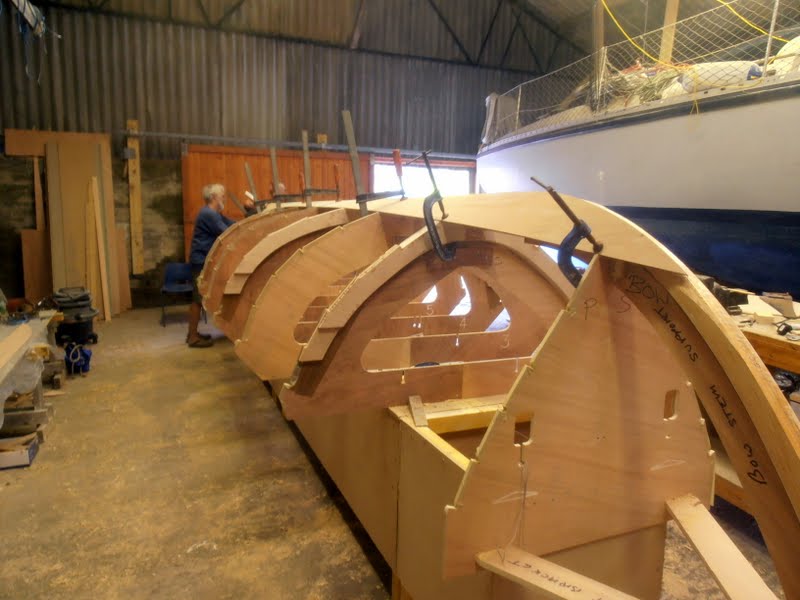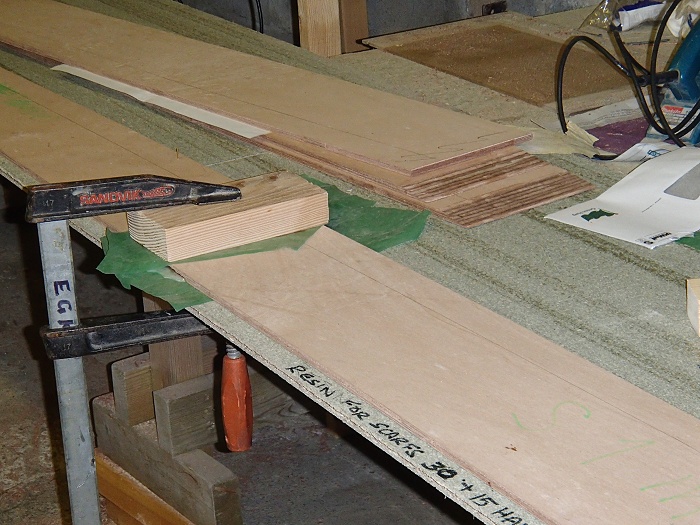Now that the hull is planked we have to complete the tasks in the last jobs list, which will take some time, so there’s no point in my posting weekly lists of things to be done. The main thing is that the work becomes much more interesting and we hope that Sunday afternoons in the cow shed will become a mini visitor attraction for those wanting to become involved, as well as those who are already interested but have not visited yet.
Remember, it’s absolutely not necessary to buy a share to take part in Seil Coastal Rowing, nor to be resident on Seil (for example I’m not). This is a genuine community project open to all who want to take part and there will be lots to do supporting the skiff as well as rowing her.
Turning to practical matters we have to decide a number of things fairly soon.
Nick Bowles has suggested that a nice colour scheme would involve a cream hull with a slate grey sheerplank and a lighter grey interior. Personally I think this would look great and I love the local reference, apart from which there seem to be no other skiffs sporting grey at present. It also widens our geographical range to include the other slate islands. Looking at the picture of other boats online it seems that lighter hulls work well with the St Ayles skiff profile. Any other suggestions?
We’ve also been thinking about the extent to which we can make minor deviations (improvements?) on Iain Oughtred’s design, while making sure that we stay within the Class Rules. The following exchange of emails among Ewan Kennedy, Robbie Wightman and Topher Dawson is relevant.
Ewan’s email to Topher and Robbie
“There are a few practical matters that I’d like to run past you ….
It seems that rudder design is uncontrolled and we are free to plan what we want in terms of the size, shape and angle of incidence of the rudder blade.
It also seems that there’s no problem with an open inwhale, which we see in the photos of other boats and would like to adopt.
We’re considering moving the thwart positions a wee bit forward, as we see that some skiffs are squatting especially when they have a heavy cox aboard. I think some teams have done this already.
Finally I’m thinking of introducing a small amount of rocker, possibly reducing the depth of the external keel at the ends by an inch or so from Iain’s construction drawing. It’s difficult to be sure from the photos online, but it looks as if there are some variations already in keel profile.”
Topher’s Reply
“Well done for getting the planking finished, and I look forward to seeing the finished boat. The rudder does seem to be as you say, uncontrolled, and there are many variations on a theme. Slotted gunwales are also OK and we have gone down that route (without reducing weight) for reasons of strength and drainage.
If you move the thwarts my advice would be to keep the number 3 seat centred on the frame, move the stroke seat 2 inches aft, number 2 seat 2 inches forward and the bow seat 4 inches forward, thus increasing the space for each rower by 2 inches and moving the rowers forward, on average, by an inch. We did this on our second boat and so did the Sailing club here.
Although oars are many and varied, a consensus does seem to be forming that the oars are better restrained in some way from floating in or out at the oarlock. My advice which you are well experienced enough to ignore would be to make the cheap oars on the oar tab of the SCRA website, and then using those as a datum make better ones when you know what you want.
I’d be a bit uneasy about introducing rocker or reducing the outboard part of the keel, because of the advantages to speed and turning which this departure from the plans would introduce. I’m aware as I write this that the same could be said of changing the seat spacing or fiddling with the rudder, but somehow the outside of the hull is sacrosanct, and I would not like to see people cutting their outside keels down to reduce drag. As you say this may already be happening and so far we have not done anything about it, but it could get out of hand.
We may have to issue guidance on this, what do you think, Robbie?”
Robbie’s Reply
“Agree absolutely with Topher. In the measurement rules there is a difference between hulls and fittings (including thwarts).
For Hulls the rule is:
2.1 The hull is to be constructed as faithfully as possible to the St Ayles Skiff plans produced by Mr Iain Oughtred. The hull may be constructed from a kit from the approved kit supplier or may be built entirely from the plans. That to me excludes varying keel shape by introducing rocker.
For fittings the rule states:
4.1 While the plans show how Rudder, Tiller, Oarlocks, Thwarts, and Seats can be constructed, it is open to the builders to innovate and experiment with these fittings.
4.2 Oarlocks must be at the gunwale. Outriggers are not permitted.
Innovation to me includes spacing the thwarts slightly differently, and that has improved the trim of some boats. IO introduced extra buoyancy in the hull shape after the prototype to try to sort out the fat cox problem, but the boats do still tend to sit rather heavily by the stern. It can be helped a little bit by the fat cox sitting forward to shout in the stroke’s ear, rather than sitting back and relaxing.
Full measurement rules are here: http://jordanboats.co.uk/JB/StAyles/Building_Measurement_V5.pdf
We need to form a sub committee to review the measurement rules at some point.”
Clearly there are matters to be decided and it will be helpful for the building team to hear from anyone who has something to contribute to the “variables”.

















